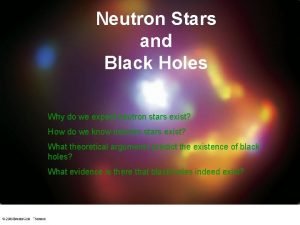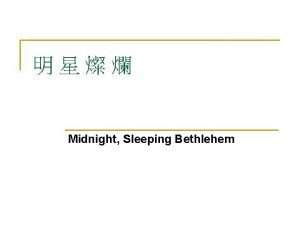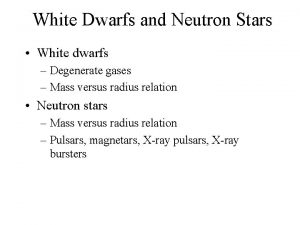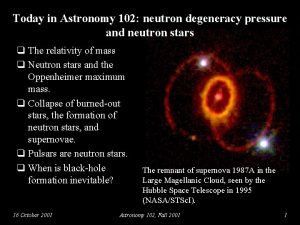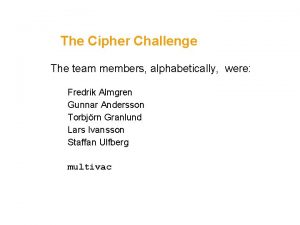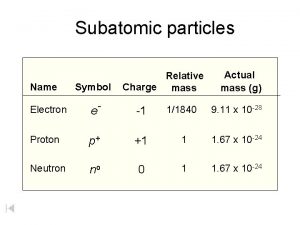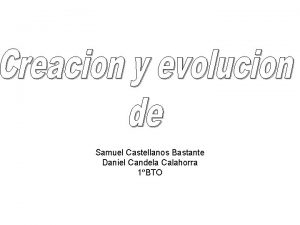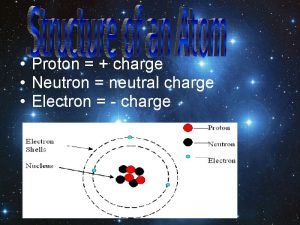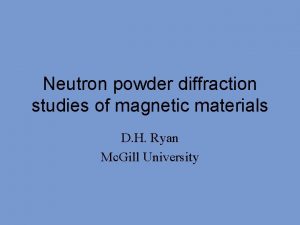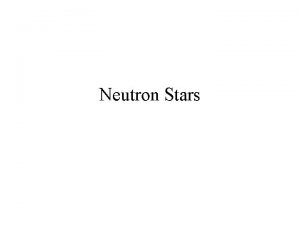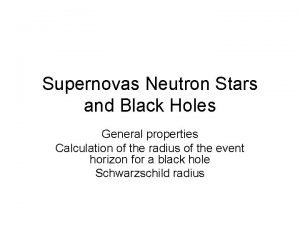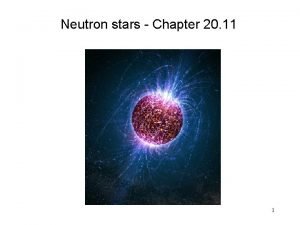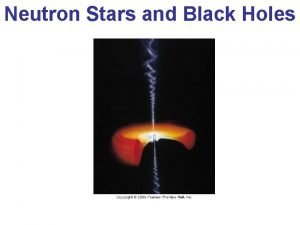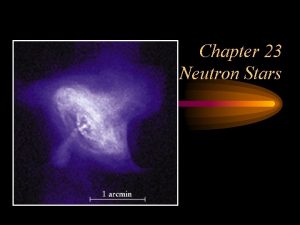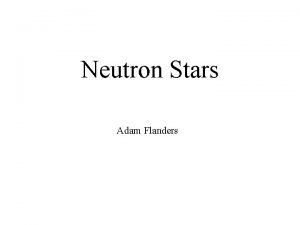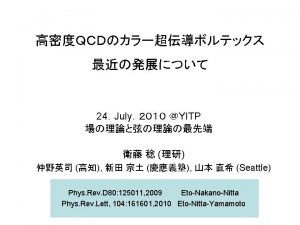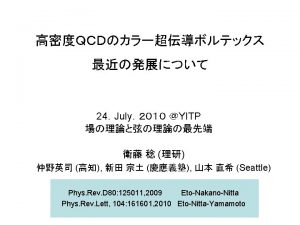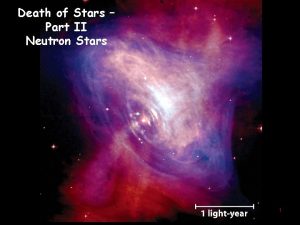Dying Stars Part 1 Neutron Stars Supernovas make










- Slides: 10

Dying Stars Part 1 Neutron Stars

• Supernovas make some pretty “remanants” also. • The Crab Nebula was seen in 1054 CE • It has a Neutron Star in the center – in addition to blinking on and off – it also gives a radio sound. (Pulsar)





• Pulsars – When a large mass star ends its life in an explosion – a supernova – the core of the star goes on to form one of two things – a Black Hole (if the star’s mass was high) or a Neutron Star – if the mass was a bit lower. – The Neutron Star (and the Black Hole) will be spinning. IF the orientation of the spin axis, and magnetic fields – line up correctly – we can hear them in the Radio – they are Pulsars.

• The first Pulsar was discovered by Jocelyn Bell. • She was a Student when she found the Pulsar, so her professor got most of the Credit. Most people now give her the credit.

• Sounds of Pulsars – Rapidly Spinning Neutron Stars PSR B 0329 + 54 period=. 714519 sec. 1. 40 rotations/sec Vela – 10, 000 years old – 89 millisecond – 11 rotations/sec Crab – Supernova in 1054 AD - ~ 30 rotations/sec PSR J 0437 -4715 an old pulsar ~ 174 rotations/sec PSR B 1937+21 Fastest Known – Period=. 00155780644887275 sec ~642 rotations/sec the surface of the star is going about 1/7 the speed of light

Disclaimer Aloha I put together these power points for use in my science classes. You may use them in your classes. Some images are public domain, some are used under the fair-use provisions of the copyright law, some are mine. Copyright is retained by the owners! Ted Brattstrom
 How are neutron stars formed
How are neutron stars formed There are millions of stars in the sky
There are millions of stars in the sky Midnight stars make bright the skies
Midnight stars make bright the skies Angular momentum
Angular momentum Neutron degeneracy pressure definition
Neutron degeneracy pressure definition Cipher neutron
Cipher neutron Symbol for subatomic particles
Symbol for subatomic particles Candela y neutron
Candela y neutron Charge of a neutron
Charge of a neutron Magnets for neutron diffraction
Magnets for neutron diffraction How to find the number of protons and neutrons
How to find the number of protons and neutrons
